More Day-trips Around Avignon and Uzés
We upped sticks and moved to the city of Uzès after four nights in Villeneuve-lès-Avignon. Uzès is a smaller city with an amazing central marketplace, located only about an hour from Avignon. The market square is arcaded on all sides, lined with shops and restaurants, and hosts a large weekly market.

Pont du Gard
We took a day trip to the famous Pont du Gard. Laurie and I had been there probably 25 years ago, and since then the Pont hasn’t changed — it’s lasted 1,800 years, so what could change? — but now there is an excellent museum about the bridge and its construction. The Pont is quite a sight and well worth the trip. It was built around 150 AD to carry water to Nîmes. The aqueduct is 31 miles long and carried 11 million gallons of water a day(!). The water, though, was full of minerals and so the aqueduct channel had to be continually cleaned-out. As the Roman Empire fell apart, no one did that necessary maintenance. By 400 AD, the aqueduct was completely clogged up and no longer working. But the bridge remained and still stands impressively above the Gard River.
Astonishingly, like almost all Roman aqueducts, this was built with no mortar. It still stands because of its design and the accuracy of the blocks’ quarrying.
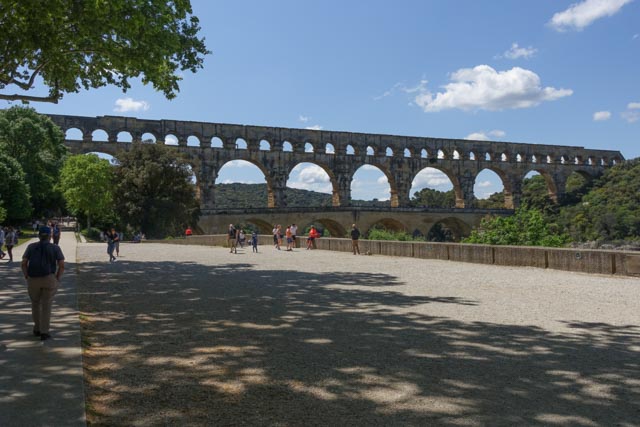
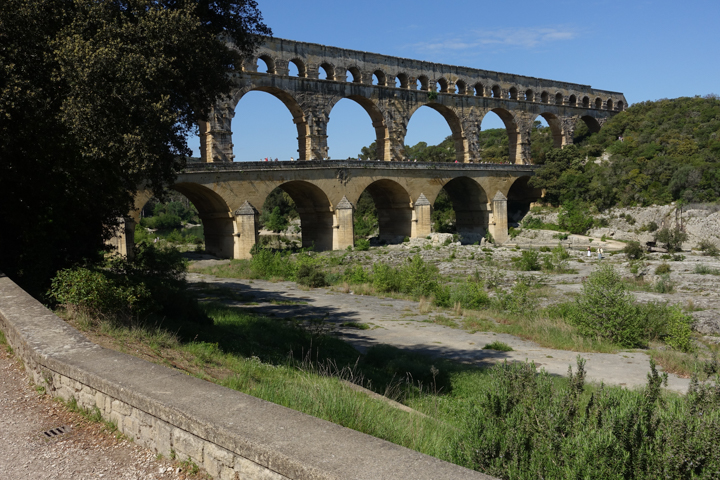
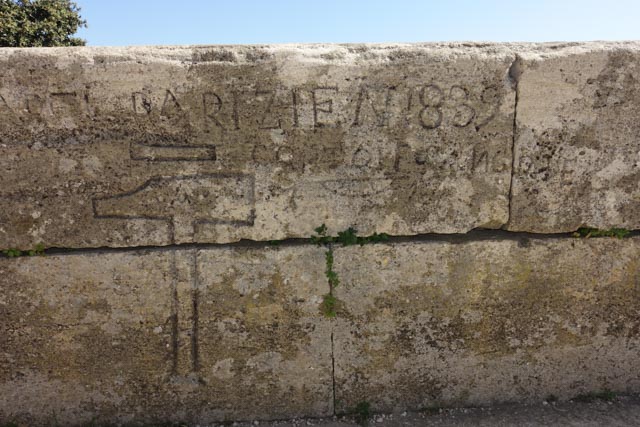
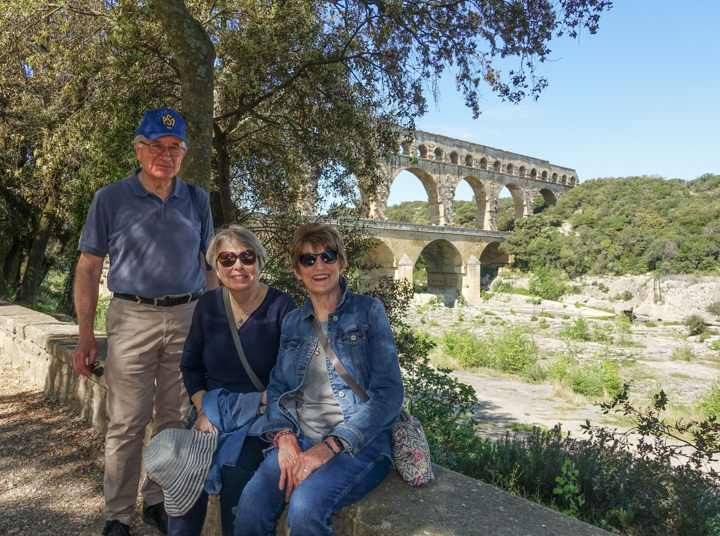
Here’s an impressive engineering feat: the aqueduct that crosses the Pont du Gard is about 31 miles long, spanning hills and valleys. The starting point is 56 feet above the ending point, which means that, on average, the aqueduct drops only 22 inches per mile (34 cm/km). Even more impressive: it drops only 15 inches per mile (24 cm/km) over the last 16 miles. This was accomplished with what we would consider rudimentary tools — not a laser level or survey instrument in sight.
A sidelight: we had lunch at a very nice restaurant with a view of the bridge. It was a lovely day, so we sat outside. Everyone enjoyed their lunch except me — I evidently ordered duck jerky. Whoooo-ie. I love duck, but this was bad — certainly the worst meal I’ve had in France, ever. I probably should have raised a fuss, but I didn’t. Ah, well…
Windows and Shutters
It seems that in much of France, a town’s shutters are all painted the same color; the colors differ from town to town. We love this aspect of France that carries on old traditions. Here are some examples (to be continued as we travel to more places):
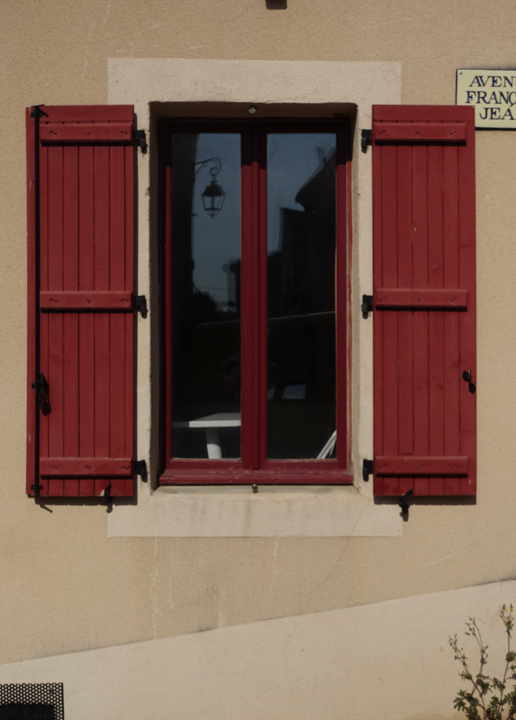
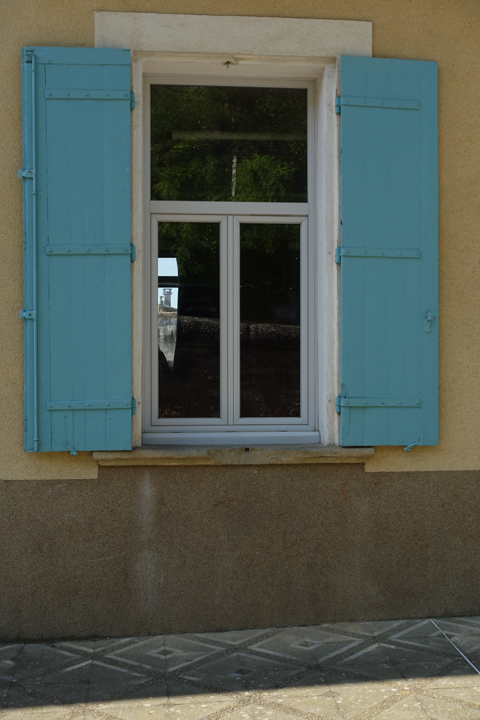
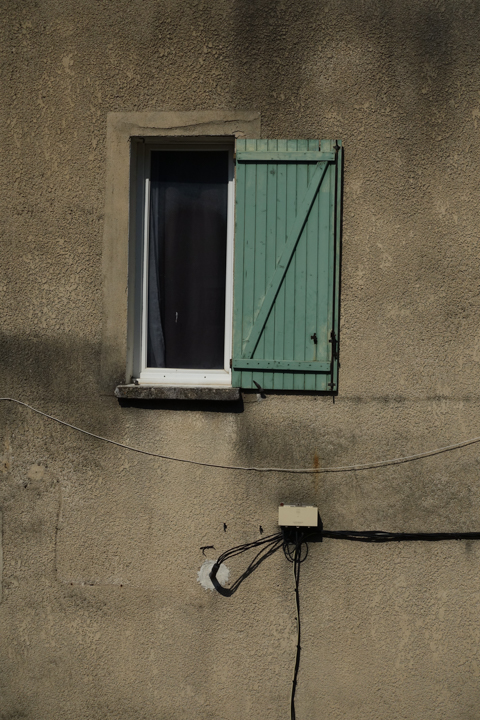
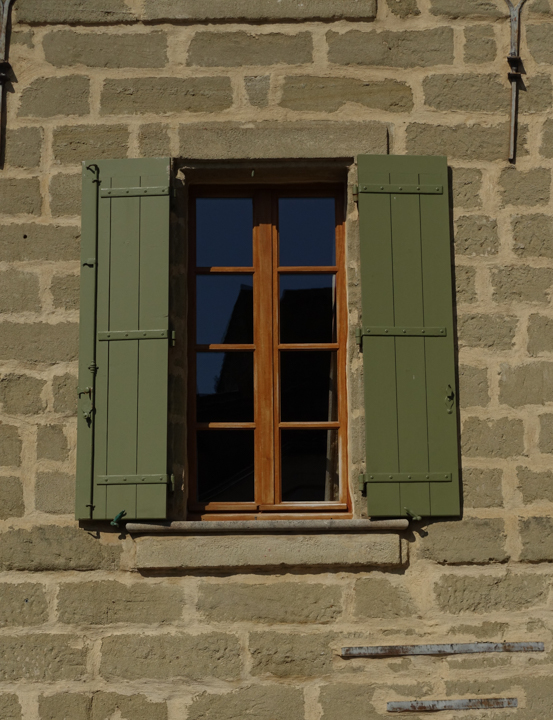
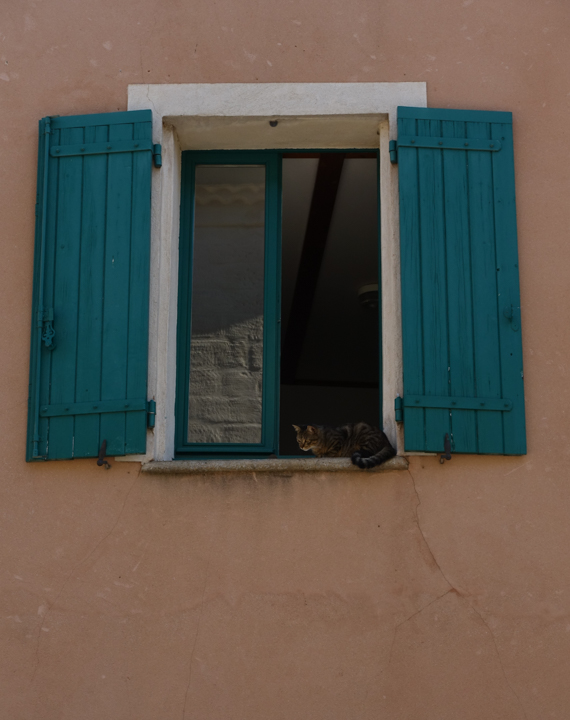
One other interesting sighting: a very early motor-scooter. That’s a small engine attached to the front wheel. If it’s a true prototype of modern-day motor-scooters, its exhaust is loud enough to peel wall paint at 50 yards.
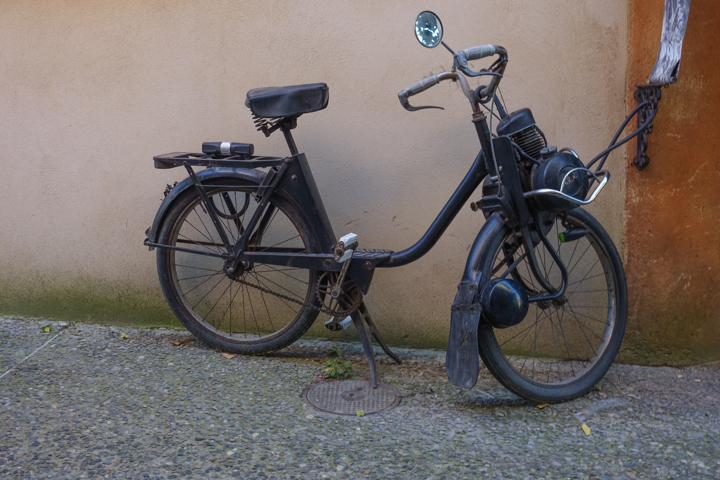
The King of Rosé Wines
I suppose true wine aficionados might argue with the “King of…” description, as there are lots of good rosés in the world (and not a few here in France), but I can tell you that some French folks we know say that Tavel rosés are the best in the country, and really, who are we to argue? We love the stuff, so when I realized we were near the source of this nectar — the town of Tavel — away we went.
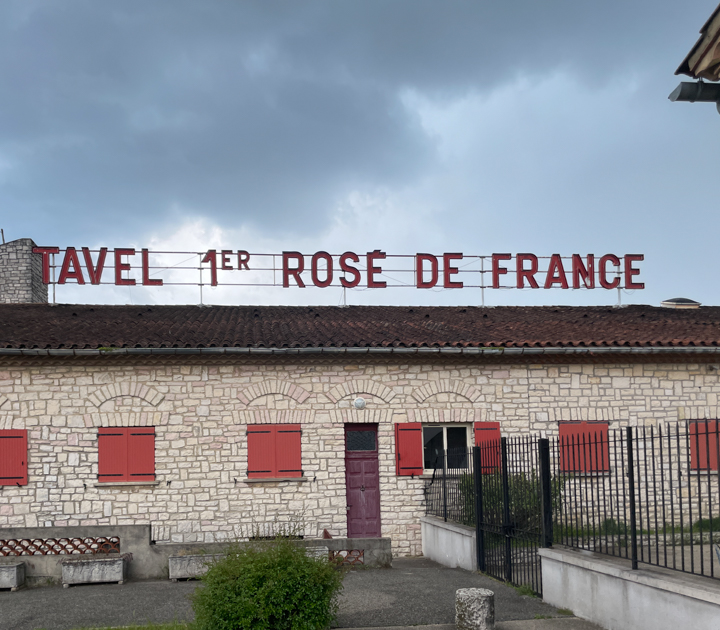
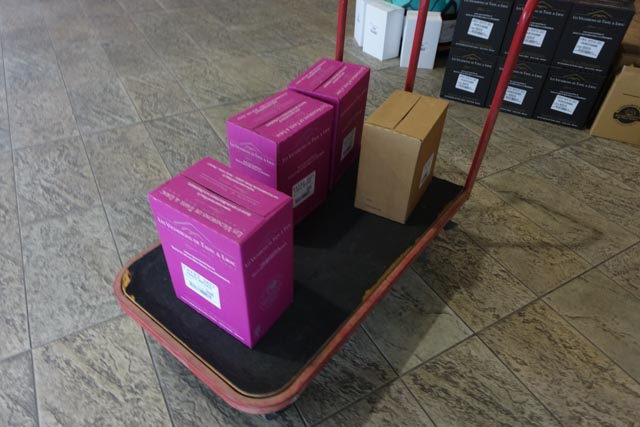
Odds and Ends
We love the roof on this building. Can we remember where we saw it or what type of building it was? Nah.
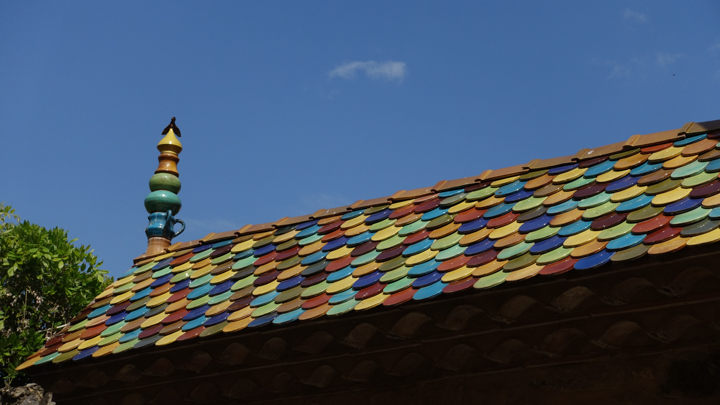
The walk to a fortress at the top of this town went up and up and up. But the view from the top was beautiful.
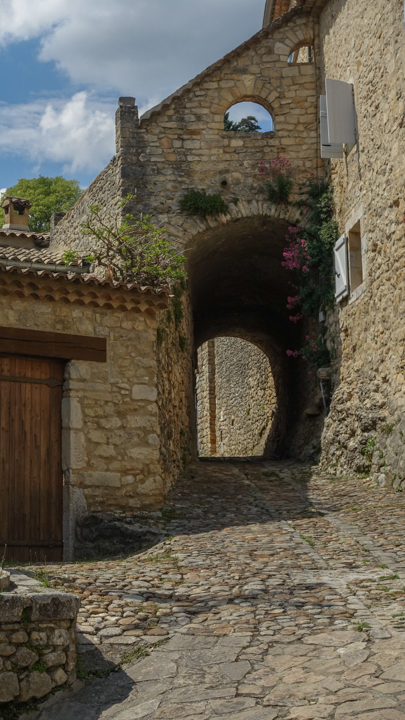
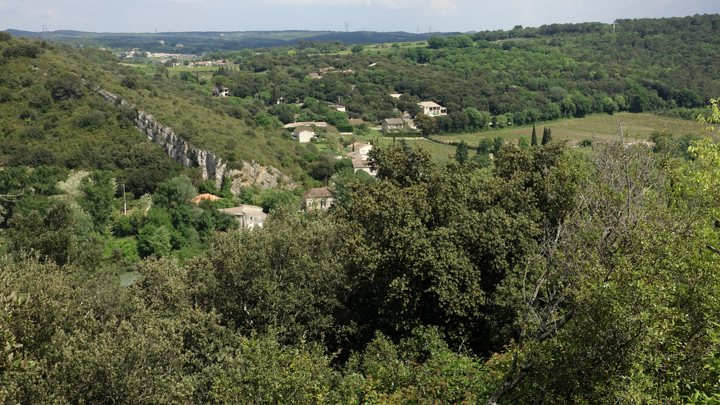
A beautiful church. I wish I could remember where it was…
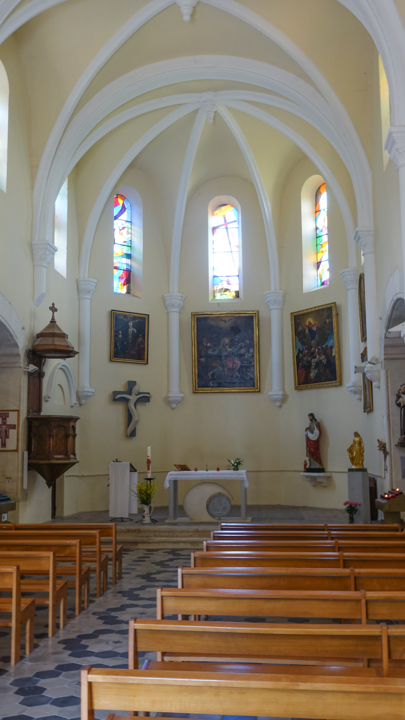
Caveau Chauvet
On the way home from Avignon/Uzés we visited the replica of Caveau Chauvet - a cave with prehistoric art. France has the best cave paintings (called “parietal art”) anywhere. The three best caves have replicas — above ground copies of the actual caves. These are perfect copies of the cave, with all the paintings reproduced. They add the great benefit of: no claustropobia.
I wish I could show a picture or two, but you can imagine how hard it is to take a picture in a cave lit as if by torches. Doesn’t work.
A sidelight: the cave Lascaux, in the Dordogne region of France, was discovered in 1940 and was, indeed, a revolution. The paintings there are dated to around 21,000 years ago. I have a book of Lascaux printed before the discovery of Chauvet; it proudly says that the drawings of Lascaux are the oldest art in the world. In 1994 the cave at Chauvet was discovered, and subsequent research dated the paintings to 34,000 years ago — 12,000 years older than Lascaux! Makes me wonder if there aren’t some other caves somewhere with even older art. Certainly a possibility.
Anyway, if you get a chance to visit these replica caves, which are located near their originals, it’s well worth the effort. The paintings are beautiful. All the actual caves have been completely closed to the public — even to researchers, because the heat of their bodies and vapor of their breath damages the art.
C'est fini
I think that’s it for our Avignon/Uzés sojourn. We probably saw some other sights I should include, but these are the best, or, at least, the ones I remember. Next stop: Spain. ¡Caramba!